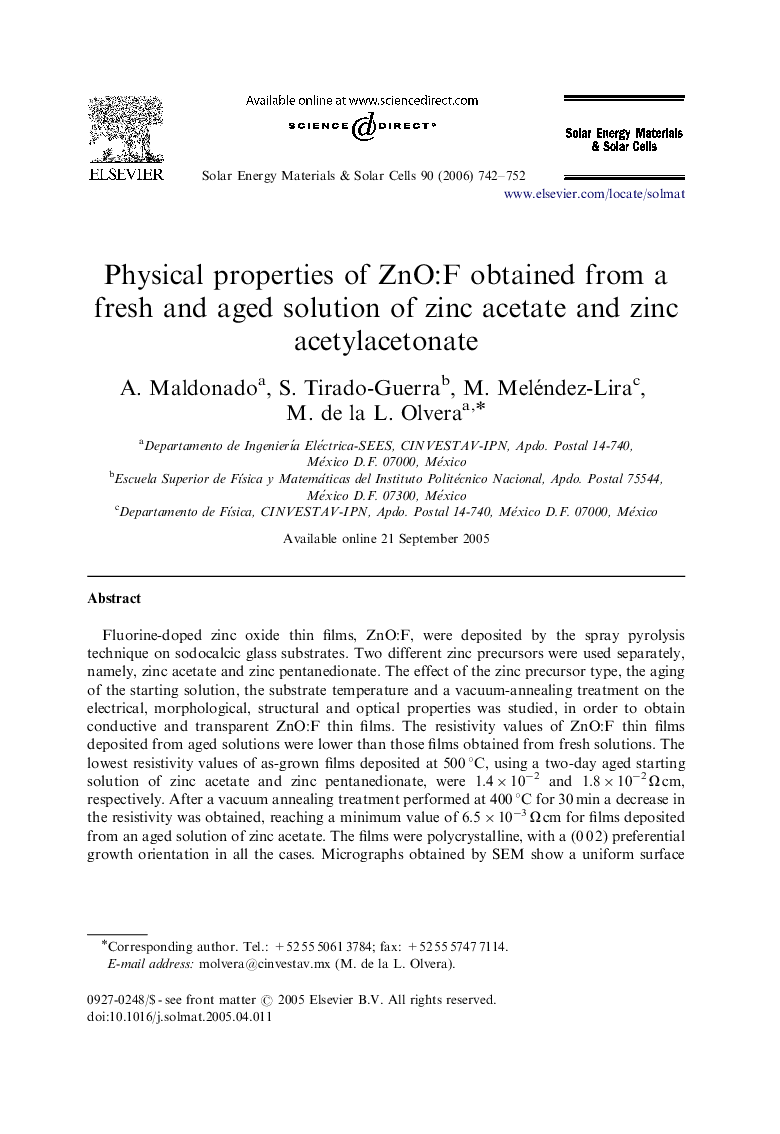| Article ID | Journal | Published Year | Pages | File Type |
|---|---|---|---|---|
| 80786 | Solar Energy Materials and Solar Cells | 2006 | 11 Pages |
Fluorine-doped zinc oxide thin films, ZnO:F, were deposited by the spray pyrolysis technique on sodocalcic glass substrates. Two different zinc precursors were used separately, namely, zinc acetate and zinc pentanedionate. The effect of the zinc precursor type, the aging of the starting solution, the substrate temperature and a vacuum-annealing treatment on the electrical, morphological, structural and optical properties was studied, in order to obtain conductive and transparent ZnO:F thin films. The resistivity values of ZnO:F thin films deposited from aged solutions were lower than those films obtained from fresh solutions. The lowest resistivity values of as-grown films deposited at 500 °C, using a two-day aged starting solution of zinc acetate and zinc pentanedionate, were 1.4×10−2 and 1.8×10−2 Ω cm, respectively. After a vacuum annealing treatment performed at 400 °C for 30 min a decrease in the resistivity was obtained, reaching a minimum value of 6.5×10−3 Ω cm for films deposited from an aged solution of zinc acetate. The films were polycrystalline, with a (0 0 2) preferential growth orientation in all the cases. Micrographs obtained by SEM show a uniform surface covers by rounded grains. No evident change in the surface morphology was observed with the different precursors used. The transmittance of films in the visible region was higher than 80%.
